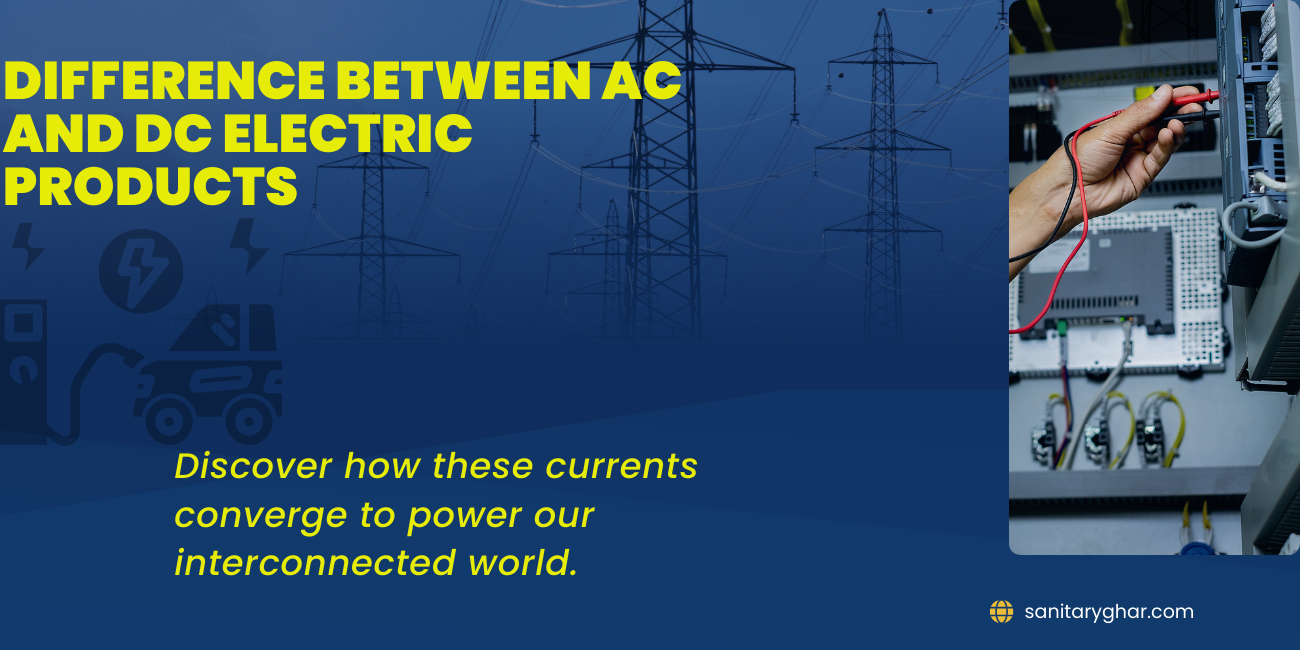What's the difference between AC and DC Electric Products?

Difference between AC and DC Electric Products
In the realm of electrical engineering and technology, the differentiation between alternating current (AC) and direct current (DC) is paramount. These two fundamental types of electrical current play a vital role in powering a wide array of devices and systems that shape the modern world. As you delve into the intricacies of AC and DC electric products, you'll discover a world of contrasts, applications, advantages, and historical significance that have collectively shaped the course of electrification.
The Genesis of Power: Origins and Principles
The journey into the realm of AC and DC electric products
commences with the historical clash between visionary minds. In the late 19th
century, the rivalry between Thomas Edison and Nikola Tesla epitomized the
ongoing debate over which current should rule the nascent world of electricity.
Edison staunchly supported direct current for its simplicity and safety,
championing it for local power distribution. In contrast, Tesla's vision
embraced alternating current, harnessing its ability to traverse long distances
through transformers, a concept famously backed by George Westinghouse.
AC Electric Products: A Symphony of Oscillation
Applications:
AC electric products form the backbone of modern power grids and infrastructures, illuminating homes, businesses, and industries across the globe. The versatility of AC power lies in its adaptability to a myriad of applications, from the illumination of a single incandescent bulb to the operation of colossal manufacturing machinery.
Advantages:
The oscillating nature of AC current facilitates
efficient voltage transformation through transformers, enabling energy to be
transmitted over vast distances with minimal loss. This characteristic
underpins its role as the preferred choice for long-distance power
transmission, making it indispensable for supplying energy from power plants to
urban centers.
Examples:
The panorama of AC electric products encompasses
an array of devices, ranging from everyday household essentials like air
conditioners, refrigerators, and washing machines to industrial workhorses such
as conveyor belts, electric motors, and large-scale manufacturing equipment.
DC Electric Products: The Pulsating Pulse of Unidirectionality
Applications:
Direct current electric products carve out a
niche in scenarios that demand a steady and unidirectional flow of electrical
energy. While less ubiquitous in power distribution, DC technology plays a
crucial role in domains requiring consistent voltage levels and portable power
sources.
Advantages:
DC shines in applications where voltage
stability is paramount, making it a cornerstone for battery-powered devices,
portable electronics, and sensitive electronic circuits. Moreover, it finds
significance in renewable energy systems, facilitating the conversion of energy
from sources like solar panels and wind turbines into storable DC power.
Examples:
DC electric products encompass an array of devices,
from the ubiquitous smartphones and laptops that keep us connected to the
world, to the burgeoning realm of electric vehicles (EVs) that are
revolutionizing transportation. In addition, specialized applications like
electroplating, electrochemical processes, and certain industrial automation
systems rely on the precise and controlled nature of DC power.
Convergence and Beyond: A Harmonious Blend
In the contemporary landscape, the chasm between AC and DC
technologies has gradually diminished, ushering in an era of convergence and
adaptability. The advent of advanced power electronics and conversion
technologies has blurred the boundaries, enabling seamless interconversion
between AC and DC currents, thereby broadening the horizons for both types of electric
products.
Conclusion: The Symbiotic Dance of Currents
In the grand symphony of electricity that permeates our
lives, the interplay between AC and DC electric products takes center stage.
These currents, each with its own distinct characteristics and applications,
orchestrate a symphony of power that fuels the machinery, devices, and
innovations driving our world forward. From the soothing hum of AC-powered
homes to the pulsating rhythm of DC-powered electronics, this dynamic duet
continues to mold the contours of our technological landscape, embodying the
spirit of progress, innovation, and the ever-evolving quest for a more
electrifying future.





